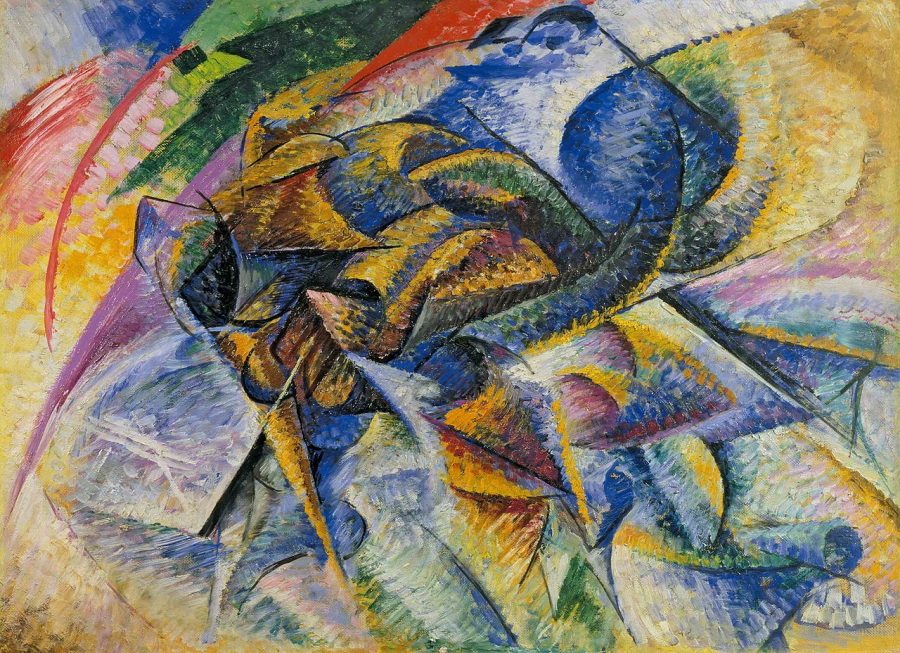Exploring Italian Futurism: The Art Movement That Was Precursor to Fascism
May 12, 2022
Fascism is a little-understood ideology, though it no doubt has had its ramifications on the world, from Hitler’s Reich (though self-proclaimed fascists will contest how truly fascist it was) to Mussolini’s Italy. Rather than seek to define a very complex concept, or to categorize what is and isn’t fascist, I instead seek to provide insight into a little-known art movement that was fascism’s predecessor that laid the groundwork for the ideology and for its acceptance amongst Italians.
We begin at the turn of the 20th century—1909 to be exact—with the publication of the infamous Manifesto of Futurism by Filippo Tommaso Marinetti, calling for violence, revolt, and struggle. The manifesto sought to glorify war, “the only true hygiene of the world,” the scorn of women and feminism, and called for the destruction of all museums, which Marinetti likened to graveyards. Futurism remained largely relevant in Italy, although it would most notably see an offshoot in Russia with the publication of A Slap in the Face of Public Taste, prominent Russian poet Mayakovsky being a founder and signatory to the manifesto. Marinetti would come to visit the Russian futurists, being spurned rather than praised by their group, which aligned mostly towards the left rather than the right.
Futurism, being an avant-garde art movement, had manifestos published concerning a wide range of mediums, from poetry to cooking. Several prominent Italian artists of the time were involved with futurism, the movement going on to influence other styles and avant-garde factions of the art world, including Dada, Surrealism, and Art Deco. Though they glorified war and most certainly enlisted after the outbreak of the Great War, futurism had largely lost steam by 1914. It was only after WW1 that Marinetti would again revive his project, founding the Futurist Political Party in 1918, calling for children to be raised by the state, abolition of seniority in careers, gender equality, “schools of patriotism,” and the abolition of the political police amongst others. Despite their almost progressive platform, the group would be absorbed into Mussolini’s Italian Fighting Leagues, which would eventually reorganize into the National Fascist Party.
Marinetti would go on to support the fascist government, turning futurism, which already found itself aligned with fascism, into a movement that remained a political lapdog to Mussolini’s ambitions. One notable and telling occurrence was Marinetti distancing himself from the anticlericalism that had helped define early futurism with the Lateran Treaty, publishing the Manifesto of Futurist Sacred Art in 1931, in accordance with Fascist Italy’s pact with the Vatican. By the 1930s, though, the once avant-garde movement, now subsumed into Mussolini’s fascist machine, had lost all steam bar a few dedicated artists. New systems had emerged and captured the eye of the youth that Marinetti had always called out to, and with the fall of fascism and the death of her founder, Italian futurism breathed its final breath.




















